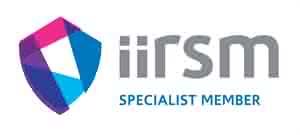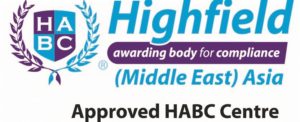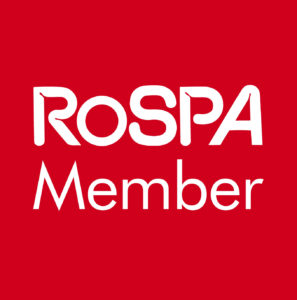When communicating risk to employees and other stakeholders try to use a variety of mediums so that the information is user friendly. Always be aware that people may have low levels of literacy, or other cognitive issues in the language in which you are communicating.
Research, Planning and Reviewing:
* Initially assess people’s OSH Literacy skills when they start in the place of work and training. People can be very shy about having literacy issues, colour blindness etc. and may not confide;
*Have OSH literacy or general literacy lessons for all employees, especially new ones;
* Make new employees aware that you are an ‘OSH literacy aware’ employer and encourage employees to confide if they have literacy issues.
* When you deliver OSH information and training remember that there are many different learning styles: use realia – examples such as signs and actual products and don’t just keep it in the classroom. make it real; have a ‘walkabout’ to show trainees and employees where OSH and Fire Safety services, such as emergency exits, First-Aid boxes and fire extinguishers can be found and used.
*Know your target audience – age, language and cultural issues, literacy levels, other issues such as sight or hearing impairments, what they do and don’t need to know – keep it relevant.
* Pitch your writing for a target age of around 10 – 11 years of age (Try not to be patronising). People with high reading ages don’t mind reading lower levels, but people with lower levels can’t read at higher levels. There are lots of tools on the web to help you calculate the reading level/age of your written information.
* Involve your target audience in planning risk communications – ask for an opinion
* Always review, audit and update your OSH communications. Get feedback from the target audience and from objective outsiders. Take into account all new employees/trainees and their needs.
When providing written information:
*Try using a larger font (size 14 and above);
* Use the comic sands font (research has shown that it is the most readable); Times Roman, Arial, Tahoma and Helvetica are also good
* Print information on coloured paper – preferably yellow, (research has shown that it makes reading more accessible – especially for persons with dyslexia.) A person can be dyslexic in English and not their native language,
* Use different coloured paper (colour codes) for different types of messages: i.e. pink for Fire safety, Yellow for general information. However, be mindful of colour blindness, especially the Red and Green, the most common, form of color blindness.
*Try to use as many pictures and internationally recognised signs and symbols as possible,
*Try to use as few graphs and charts as possible. If you do use them, make sure they are concise and clear: pie-charts and bar graphs.
* Use Paragraph and Section Headings using Bold
Avoid using italics and BLOCK CAPITALS – use lower case and if you need to highlight a point use bold.
* Use Headings and Topic sentences which engage the reader and make it relevant to them: When you lift correctly it can help you to avoid pack problems. Follow these instructions to find out how:
* Try to use positive words and emphasise the positive benefits. Try to use few negative words e.g:
Positive: Always lift with your legs – it keeps your back healthy and strong!
Negative: Don’t bend your back when lifting, you can cause a bad and painful injury to your back
* Keep sentences short and bulleted;
* Try not to use ‘big’ words with lots of syllables, use simple synonyms,
* Highlight key or difficult words and provide an additional glossary with the information,
* Give a pronunciation guide, by breaking the word up into its component syllables: Chemicals (kem-e-kals)
* Use the ‘active voice’ and not the passive. Try to use commonly used verbs:
Active voice- The worker lifts the load. Passive voice – The load is lifted by the worker.
* Always use the present-simple/infinitive/verb 1 verb tense.
* Ensure employees can read and understand imperative sentences, modal verbs (must, will, can, should, may)
Other helpful tips:
* Use both verbal and written forms of communication (people can have fantastic speaking and listening skills and be severely dyslexic and there are both visual and auditory forms of dyslexia);
* Train and encourage employees to use their mobile devices as an OSH tool to find and translate information and to report occurances,
* Use a buddy-system for persons with low levels of literacy – a work or training buddy who can explain things to the them,
* Get specialist training and assistance (give me a call or an e-mail: davidmagee@oshliteracy.org);
* Pre-warn people that you will be giving OSH information on a specific subject, so that they can read-up or ask for advice before hand – ie ‘On Thursday there will be a Talk on Fire Evacuation – you can find information on Fire Evacuations at: www…..
* Try to assess if the information has been understood, through simple Q & A or multiple-choice questions which must be confidential.
* If you need to get written information, try to used close questions, with ‘Yes’ or ‘No’ answers. Tick boxes are best.
* Get OSH information translated into mother tongues- inform the translator of the points above;
* Have bi-lingual dictionaries freely available in the workplace or place of training, encourage the use of smart devices to translate OSH information.
* Have an open-door policy and make OSH committees representative of the stakeholders,
*Compile a list of useful websites or other places where assistance can be obtained –
* put www.oshliteracy.org at the top of your list 🙂
© & Intellectual property of Oshliteracy.org, J.David Magee, 2015.






